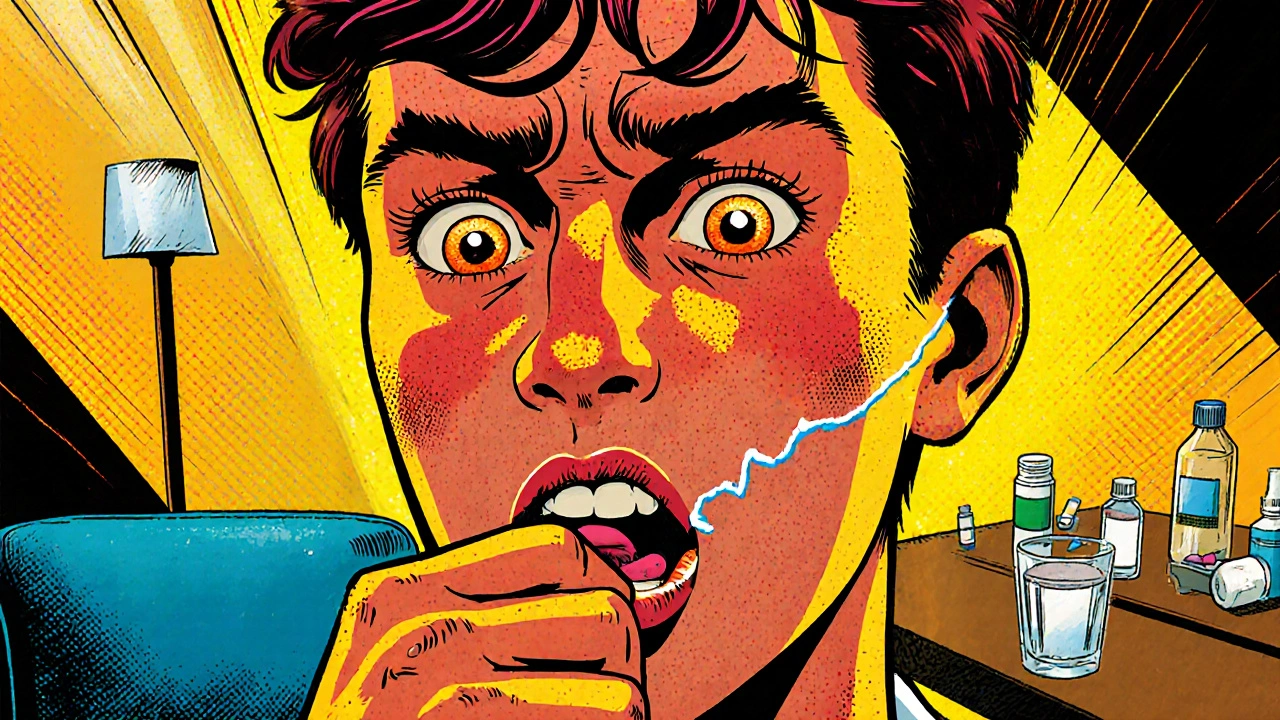
Amitriptyline Overdose: Recognizing Signs, Symptoms & Emergency Treatment
Learn how to spot early and severe signs of amitriptyline overdose, what immediate steps to take, and the medical treatments that can save a life.
When working with Activated Charcoal, a form of carbon processed to have tiny pores that trap chemicals and toxins. Also known as charcoal tablets, it acts like a sponge inside the gut, pulling in unwanted substances before the body can absorb them. Activated charcoal is commonly used in emergency rooms for Poisoning, the accidental or intentional ingestion of harmful chemicals, and it also shows up in wellness circles as a claimed aid for Digestive Health, supporting regular bowel movements and reducing gas buildup. The core idea is simple: the charcoal’s large surface area creates a physical bond with toxins, preventing their entry into the bloodstream. This principle links activated charcoal to drug overdose scenarios, where rapid binding can limit drug absorption and buy time for medical intervention.
Activated charcoal works by adsorption, not absorption; it holds particles on its surface rather than taking them in. This action requires an empty stomach or at least a short window after a toxin is swallowed, otherwise the charcoal can’t reach the target material. The process is most effective for substances that are not highly lipid‑soluble, such as many pills, pesticides, and some industrial chemicals. When you take a charcoal tablet, it travels through the stomach and into the intestines, where it traps the toxin and carries it out with waste. Because it stays in the gut, it doesn’t enter the blood, which is why it’s generally safe for short‑term use but can interfere with the absorption of vitamins, minerals, and prescription drugs if taken together.
From a practical standpoint, using activated charcoal means timing and dosage matter. A typical adult dose for poisoning is 0.5 to 1 gram per kilogram of body weight, given as a single or multiple dose depending on the toxin’s half‑life. For everyday wellness, people often take 500 mg to 1 g per day, but the evidence for long‑term benefits is mixed. If you’re on medication, you should separate charcoal intake by at least two hours to avoid reducing drug effectiveness. This separation rule also applies to supplements like iron or calcium, which can bind to charcoal and lose their potency.
Beyond emergencies, activated charcoal finds niche uses in water filtration, air purification, and even cosmetics. In water filters, the same pores that catch chemicals in the gut trap contaminants in drinking water, making it safer to sip. In air filters, charcoal adsorbs volatile organic compounds, reducing odors and pollutants. While these applications are outside the medical realm, they illustrate the versatile nature of the material and reinforce the core concept: a high surface area means more opportunities to capture unwanted particles.
Now that you understand the science and practical tips, you’ll notice the articles below cover a wide range of topics that intersect with activated charcoal. From detailed antibiotic comparisons that explain why some drugs might be better candidates for charcoal binding, to heart‑health guides that warn about interactions, and even guides on buying cheap generic medicines online, the collection gives you a holistic view of where charcoal fits into medication safety, detox strategies, and everyday health decisions. Dive in to see how the principles of adsorption play out across different treatments and learn how to use activated charcoal wisely in your own health routine.

Learn how to spot early and severe signs of amitriptyline overdose, what immediate steps to take, and the medical treatments that can save a life.